Chapter History
 1892 — The Sierra Club is founded. Membership is largely concentrated in the Bay Area and Los Angeles regions.
1892 — The Sierra Club is founded. Membership is largely concentrated in the Bay Area and Los Angeles regions.
1924 — The San Francisco Bay Chapter is established to include San Francisco, Alameda, Contra Costa, Marin, and San Mateo counties (San Mateo will later come under the Loma Prieta chapter). The first Chapter Chair is Orwell Logan. The first subcommittees are Membership, Trails, Local Walks Schedule, Education, and Entertainment.
The Chapter adopts San Francisco Tuesday Dinners from the Club. Dinners are held at Clinton Cafeteria and chaired by Wanda Bernhard.
1925 — For its Education Committee and Tuesday Dinner programs, the Executive Committee invests in a "projecting machine" and solicits members' photo negatives to make "lantern slides" of outdoor treks. Dinners begin to draw more people into local outings.
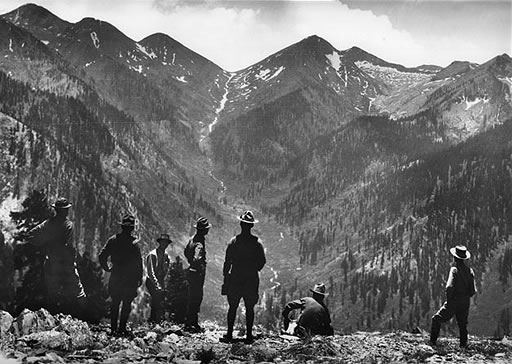 1926 — The Sequoia National Park is enlarged after the Chapter and other groups pressure congressional representatives.
1926 — The Sequoia National Park is enlarged after the Chapter and other groups pressure congressional representatives.
The Chapter strongly opposes a road building plan to traverse the south side of Mt. Tamalpais. It also opposes plan to divide portions of Tamalpais open space into private cabin sites.
1927 — The Chapter enlists the support of the Angeles Chapter to campaign for passage of Assembly Bill 677 which will create Mt. Tamalpais State Park. The bill passes both houses.
1929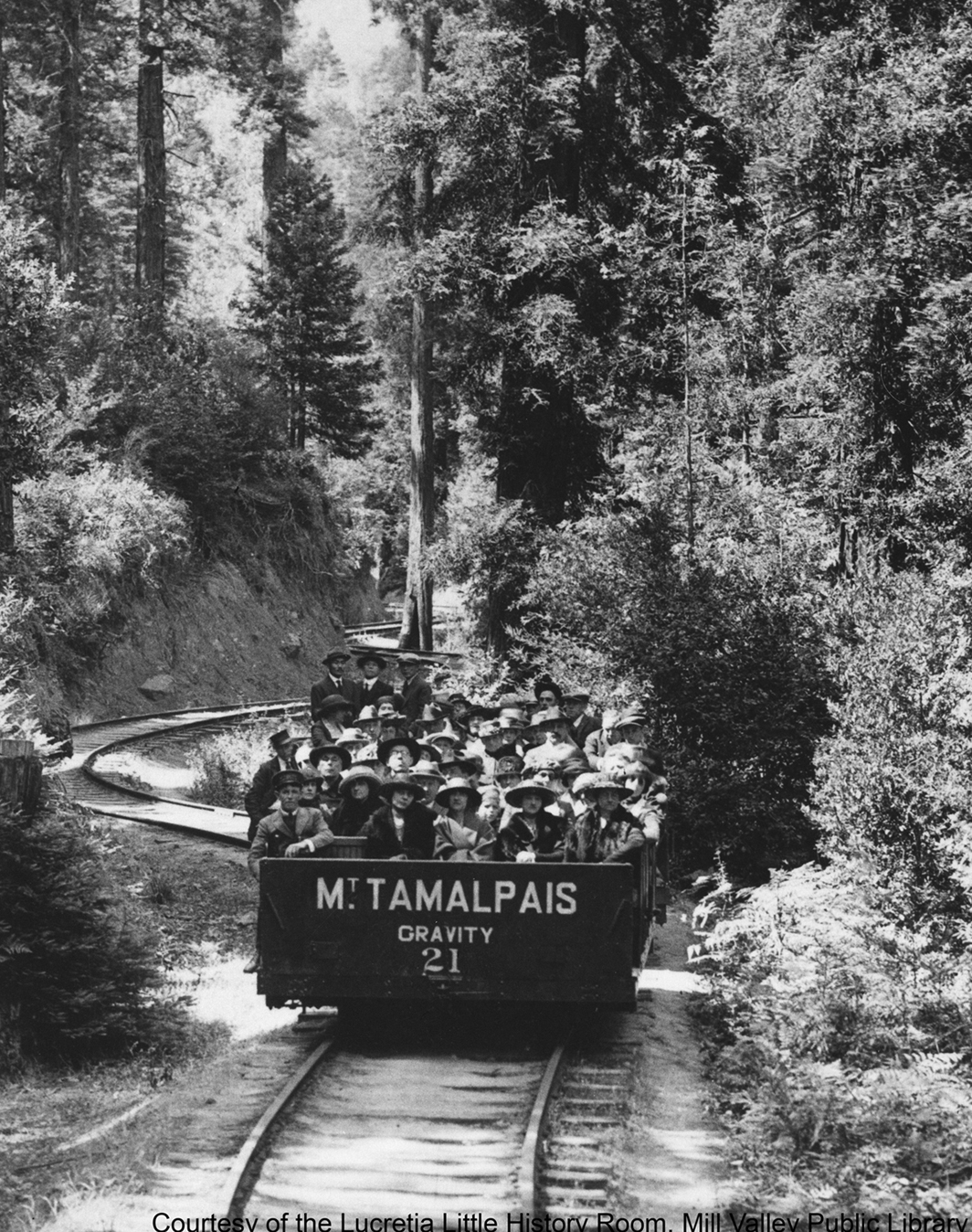 — The Chapter participates in dedicating a plaque in Muir Woods to the memory of William Kent who generously donated many acres to Mt. Tamalpais.
— The Chapter participates in dedicating a plaque in Muir Woods to the memory of William Kent who generously donated many acres to Mt. Tamalpais.
1930 — Mt. Tamalpais starts operating as a state park.
The Chapter launches its first letter writing campaign to protect the integtrity of the State Park Commission.
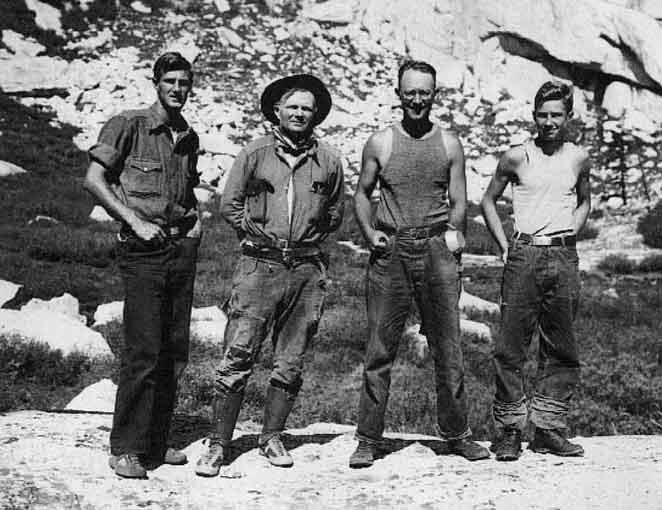 1931 — Francis P. Farquhar and Robert L. M. Underhill introduce the use of the rope in rock climbing on premier ascent of Mt. Whitney's East Face.
1931 — Francis P. Farquhar and Robert L. M. Underhill introduce the use of the rope in rock climbing on premier ascent of Mt. Whitney's East Face.
1932 — Despite safety concerns, Executive Committee chair Lewis Clark succeeds in adopting the Cragmont Climbing Club into the Chapter as the Rock Climbing Section.
1934 — The East Bay Regional Park District is established, cheered on by the Chapter and other conservation groups.
The Publications and Publicity Committee is established.
Chapter leaders Richard Leonard, Bestor Robinson, and Jules Eichorn make the first technical Yosemite climbing ascent of Cathedral Spires.
1935 — Legislation is introduced to establish Kings Canyon National Park.
 1936 — Morgan Harris pioneers the pendulum traverse while climbing Royal Arches with two others.
1936 — Morgan Harris pioneers the pendulum traverse while climbing Royal Arches with two others.
1938 — The first issue of the Yodeler goes to press: a hefty 75¢ subscription for one year.
1939 — The first summit-climb of Shiprock in New Mexico is achieved by Chapter officers David Brower, Raffi Bedayn, and two others with the first use of expansion bolts.
The Natural Science Section is formed (originally called the Nature Study Group).
1940 — Congress establishes Kings Canyon National Park. This has been of major co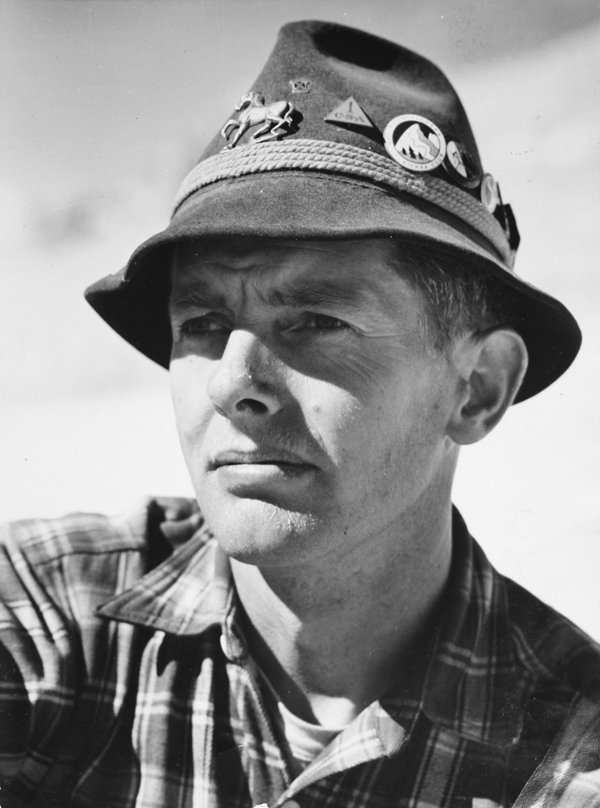 ncern to the Chapter for some time.
ncern to the Chapter for some time.
1941 — Club Vice President Bestor Robinson urges the Chapter's now-famous Rock Climbing Section to "perfect and standardize" climbing techniques for U.S. Army mountaineers.
The Yodeler stages a central mail clearinghouse for Chapter families to correspond with loved ones overseas and for servicemen to continue a dialog with the Yodeler at home.
1942 — Brower edits the Sierra Club Manual of Ski Mountaineering, which is used to train U.S. mountain troops heading overseas during WWII.
The Chapter enlists Cicely Christy to run its Harvest Camp in the Napa Valley to assist the war effort. On weekends and vacations many Chapter members replace enlisted farm laborers to harvest crops. St. Helena High offers its kitchen and showers to the group, which camps on the school grounds.
1943 — The Chapter takes over the West Point Inn, saving it for future Mt. Tamalpais hikers. Nearly 1,000 Sierra Club members are in the armed forces.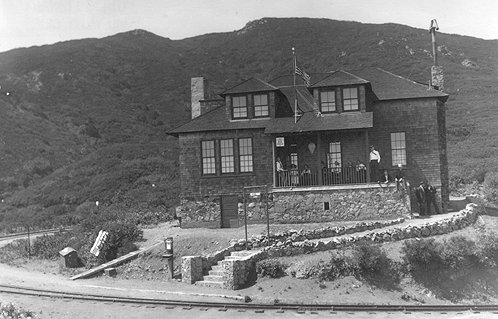
1944 — The Advertising Committee and the Elections Co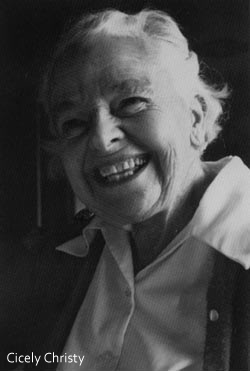 mmittee are formed. Mountain gear and nylon climbing rope are developed by enlisted Chapter leaders for military use.
mmittee are formed. Mountain gear and nylon climbing rope are developed by enlisted Chapter leaders for military use.
1945 — The 10th Mountain Division of the U.S. Army returns home from the war. Many Sierra Club climbers are in this division. The Yodeler celebrates their return with a special Victory Edition on September 4, 1945. Chapter members resume their civilian lives and turn their attention to mounting threats to wilderness.
1946 — The growing demand for lumber for post-war housing and dams for power alarm Sierra Club conservationists.
1948 — Jack Sudall establishes the East Bay Dinners as social venue for educational programs.
1949 — San Francisco Tuesday Dinners celebrates 25 years.
1951 — Ed Wayburn establishes the first Chapter Conservation Committee, which he chairs.
The Chapter urges members to protest the proposed aerial tramway up Mt. San Jacinto near Palm Springs to preserve wilderness.
1952 — Kings Canyon National Park continues to be threatened with the building of dams: Tehipite Valley, Copper Creek, and Cedar Grove in the park are targeted.
1953 — The Secretary of the Interior recommends the immediate construction of Echo Park Dam and Split Mountain Dam in Dinosaur National Monument, galvanizing the Sierra Club into action.
1954 — By this year, a Speakers Bureau, Hospitality Committee, and Winter Sports Committee have long since been thriving, as well as several Sections: Conservation-Education, Natural Science, Hiking, Knapsacking, Car Camping, and River Touring.
1955 — Chapter membership reaches 4,500.
The Bay Area Air Quality Management District is created by the California Legislature, the State's first regional agency dealing with air pollution.
Following an extraordinary Sierra Club publicity blitz, and with the aid of other conservation groups, Dinosaur National Monument is saved from damming.
1956 — Ed Wayburn submits a plan to the State Parks Commission calling for acquisition of the whole bowl of Frank's Valley and Kent Canyon for Mt. Tamalpais parkland.
1957 — The California Legislature 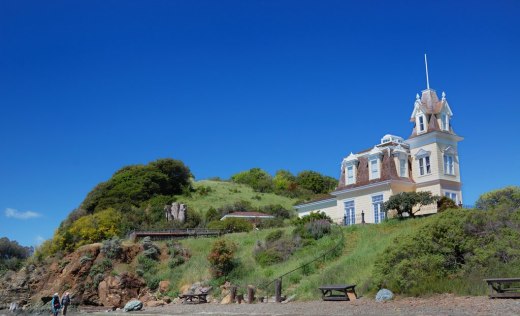 establishes the San Francisco Bay Area Rapid Transit District (BART) based on the environmental concept that a regional rapid transit system is essential to stem the tide toward dependence on autos and freeways.
establishes the San Francisco Bay Area Rapid Transit District (BART) based on the environmental concept that a regional rapid transit system is essential to stem the tide toward dependence on autos and freeways.
The Richardson Bay Wildlife Sanctuary is established and will include over 900 acres of wetlands.
1958 — The national Club and Chapter successfully oppose the proposed PG&E nuclear plant at Bodega Head, situated near an earthquake fault.
1960 — The Sierra Club, National Audubon and affiliates continue to lease Leslie Salt's marsh and intertidal lands for wildlife sanctuaries as an innovative way to protect habitat.
1961 — By this year, the Chapter is sponsoring more than 300 outings per year.
The Mountaineering Section is formed.
T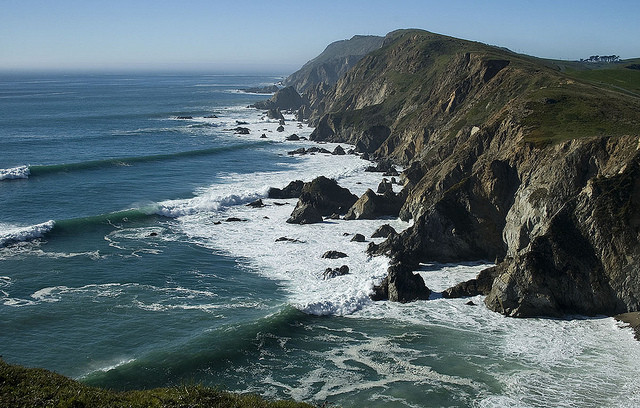 he Chapter supports establishment of the Association of Bay Area Governments (ABAG), the official regional planning agency for environmental quality, transportation, etc.
he Chapter supports establishment of the Association of Bay Area Governments (ABAG), the official regional planning agency for environmental quality, transportation, etc.
Claudia Doerr revives the San Francisco Tuesday Dinners, which had discontinued in 1952. The first dinner costs $1.85 at the Golden Gate Yacht Club. Two hundred attend.
1962 — Point Reyes National Seashore is established per legislation introduced by Representative Clem Miller and California Senators Clair Engle and Thomas H. Kuchel.
The Chapter and voters support the plan to construct BART.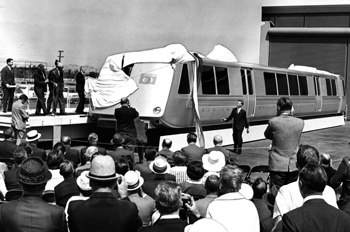
1963 — The Chapter raises funds to enable Laura Reynolds to produce an exceptional film on the beauty of Point Reyes. It is shown across the country to educate legislators and the public and to solicit land-acquisition monies for the seashore.
1964 — The Wilderness Act is passed.
Chapter membership reaches 8,000.
The John Muir National Historic Site at Martinez is established as a national park.
1965 — Spearheaded by the Save The Bay movement and indomitable leaders like Sylvia McLaughlin and Kay Kerr, the McAteer-Petris Act is passed establishing the Bay Conservation and Development Commission (BCDC). It is made a permanent agency in 1969.
The state pa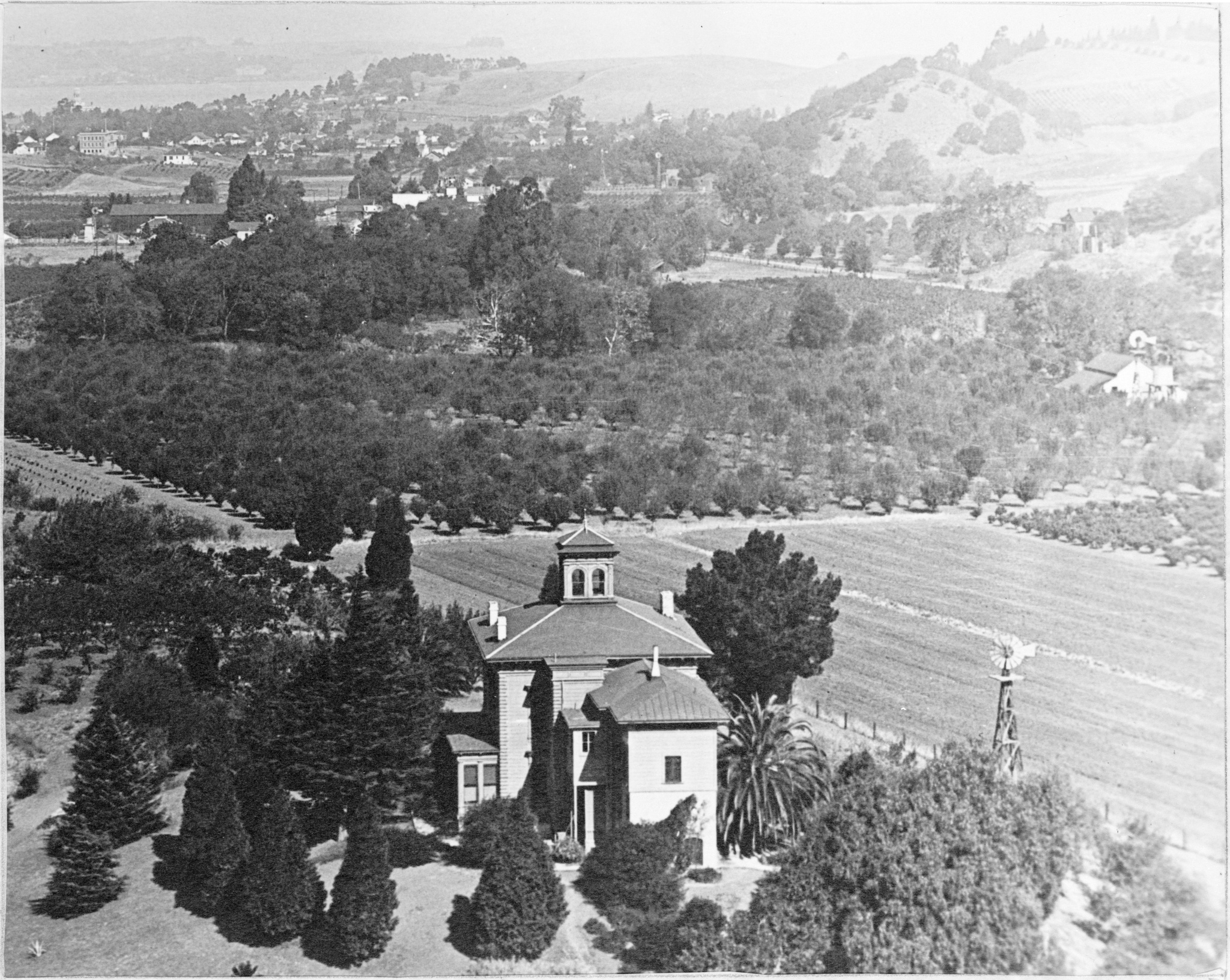 sses the Williamson Act giving tax incentives to land owners to restrict their lands to agricultural and open space uses.
sses the Williamson Act giving tax incentives to land owners to restrict their lands to agricultural and open space uses.
1966 — Chapter membership rises to 11,648.
1967 — The East Bay Regional Park District obtains title to 1,200 acres of additional land in Wildcat Canyon. Briones Regional Park, 3,100 acres, opens to the public in Contra Costa County.
1968 — Redwood National Park is established preserving 58,000 acres, of which 8,990 acres are old growth redwoods.
1969 — Sierra Singles is formed.
Chapter bicycle trips are begun.
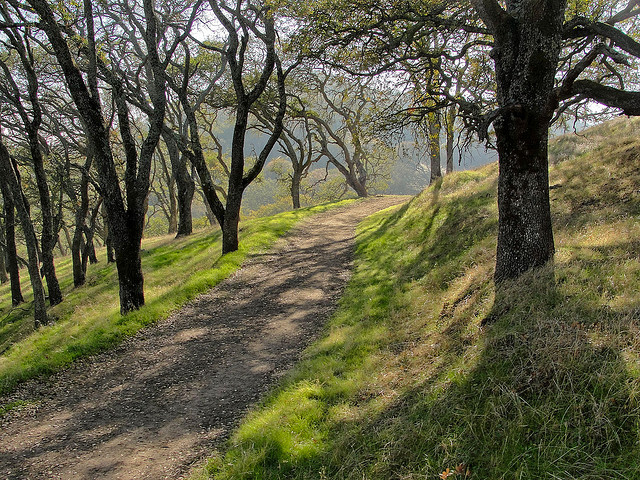 Membership in Chapter reaches 20,000.
Membership in Chapter reaches 20,000.
The Porter-Cologne Act is passed, which provides for regional water quality control.
The National Environmental Policy Act is passed.
The Chapter moves into its own small office (room 1043) of Mills Tower, San Francisco, down the hall from Sierra Club headquarters.
1970 — The Legislature enacts the California Environmental Quality Act (CEQA).
The campaign to save Point Reyes continues and is a top priority for the Chapter.
Dave and Pat Michener take over editorship of the Schedule and continue almost 30 years.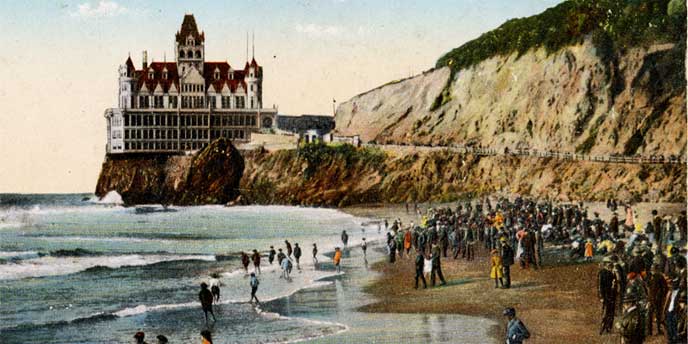
1971 — The Chapter is midwife to the birth of People for a Golden Gate National Recreation Area, the organization which pushes successfully for the legislation to establish the GGNRA. (Ed Wayburn chair, and Amy Meyer co-chair.)
The Mount Diablo Regional Group of the Chapter is formed.
Save Mount Diablo is formed with the leadership of botanist Mary Bowerman, long a committee member of the Chapter's Natural Science Section.
Inner City Outings is formed to introduce inner city youth to the wilderness experience. This pilot program adopted by the Chapter spreads to cities across the U.S.
1972 — This is a landmark year. Congress authorizes establishment of Golden Gate National Recreation Area (GGNRA).
Dwight Steele and the Chapter celebrate the defeat of the Southern Crossing.
The 2,100 Marincell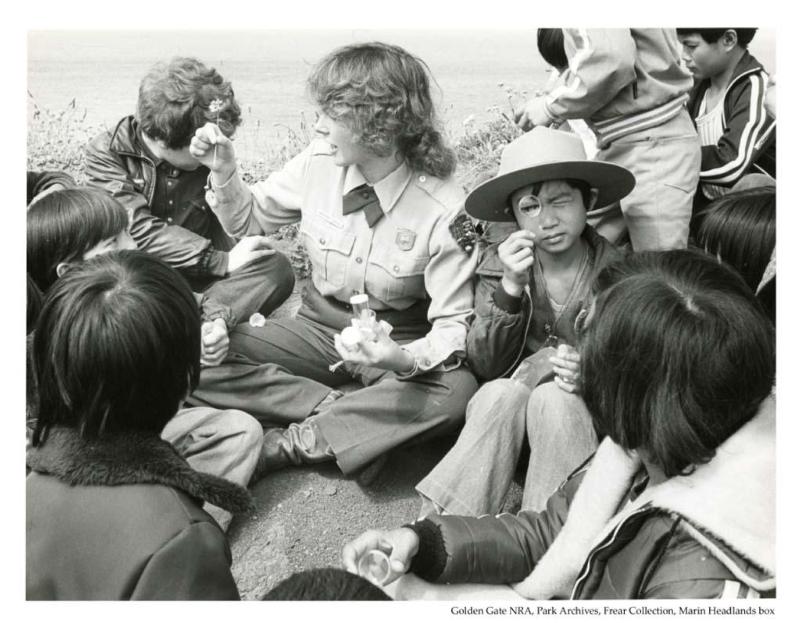 o Development acres at the Marin Headlands are sold to the Nature Conservancy, thence to GGNRA.
o Development acres at the Marin Headlands are sold to the Nature Conservancy, thence to GGNRA.
The Coastal Zone Initiative is passed to establish the California Coastal Commission. This is the first time the Chapter is involved in a major statewide initiative.
The San Francisco Bay National Wildlife Refuge Act passes to protect a 20,000 acre wetlands habitat in the South Bay.
1973 — Chapter membership reaches 27,500. Chapter moves to a new office and bookstore in Oakland.
EBMUD opens its lands for recreational use.
The Marin Regional Group of the Chapter is formed.
The original Tri-Valley Group (Livermore-Amador) of the Bay Chapter is formed and operates successfully for the next 15 years.
The Marin County Open Space District is established and will later purchase over 13,500 acres.
1974 — The San Francisco Bay Chapter celebrates its 50th anniversary.
Chapter conservation chair Helen Burke wins election to the Board of the East Bay Municipal Utility District, where she serves for 16 years, beginning a tradition of Chapter leaders attaining public office.
1975 — The San Francisco Regional Group of the Chapter is formed.
1976 — Chapter activities continue to thrive, including Sierra Couples, Snow Camping, Solo Sierrans, and Ski Touring 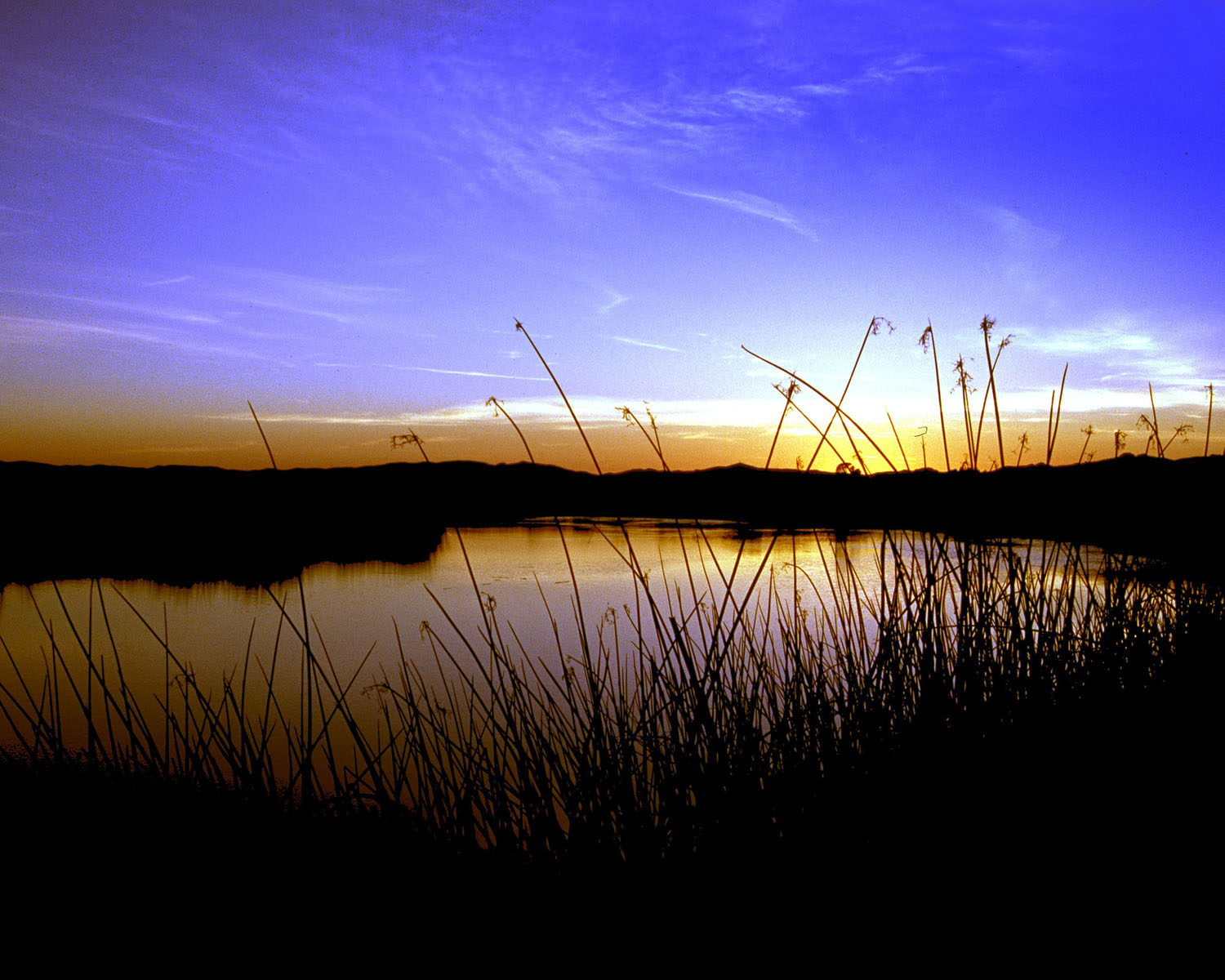 (skiing is one of the oldest).
(skiing is one of the oldest).
Steve Rauh begins his 12-1/2 years as Yodeler editor.
1977 — In response to water concerns raised by drought, the Chapter forms a Water Committee.
John Shively becomes chair of the East Bay Dinners and organizes them with Jack Sudall and Jane Barrett.
Chapter helps persuade Alameda County Supervisors to reject Harlan Gelderman's plan for a "New Town" at Las Positas near Livermore.
The Wildlife Committee helps in campaign to pass the Suisun Marsh Protection Act.
1978 — The Yodeler prints a copy of the Clean Indoor Air initiative as centerfold.
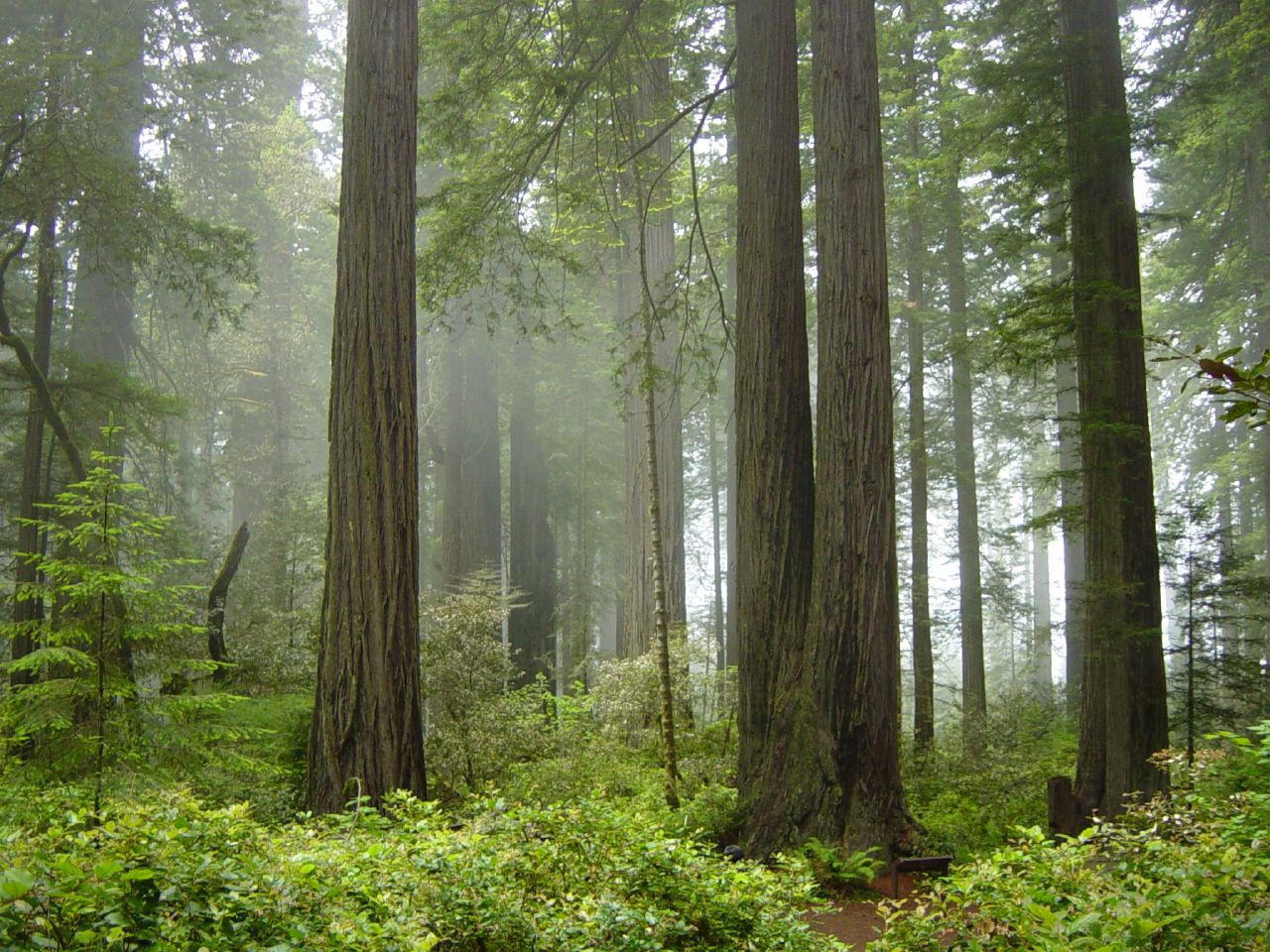 Sierra Fest spring festival is biggest Chapter fundraising event ever; it fills a 62,000-square-foot building at Fort Mason with displays by Club sections and vendors.
Sierra Fest spring festival is biggest Chapter fundraising event ever; it fills a 62,000-square-foot building at Fort Mason with displays by Club sections and vendors.
It's a big year for the Chapter on land protection. The Golden Trout Wilderness is created, including 90% of the lands proposed. Redwood National Park is enlarged with 48,000 acres, protecting the watershed of the world's tallest trees. As the Army plans to close its base at the Presidio, the Chapter joins in a plan to make the former base into a national park.
Mount Diablo Group starts annual "beginners hiking series".
Car Camping Section is revitalized.
Chapter Office moves to 6014 College Ave. in Oakland. Volunteers work hard to remodel and set up.
1980 — Save the Bay and the Chapter propose creation of the Eastshore State Park.
1981 — The Yodeler conducts a series of interviews with local and national figures including Linus Pauling, Daniel Ellsburg, David Brower, and Dr. Helen Caldicott. Concerned with nuclear issues this series receives national attention and helps bring the Sierra Club to adopt a Disarmament Policy in 1981 after 18 months of debate.
More than one million petition signatures demanding the dismissal of Interior Secretary James Watt are gathered by the Sierra Club and other conservation groups.
1982 — By now, the Chapter has 14 conservation subcommittees including Wilderness, Hazardous Waste, Transportation, Wildlife, and Coastal.
1983 — The Chapter establishes an Urban Creeks and Wetlands Task Force, chaired by Judith Goldsmith. This committee plays an important role in creating a regional movement for preservation and restoration of creeks.
Secretary of the Interior, James Watt, is forced to resign from office.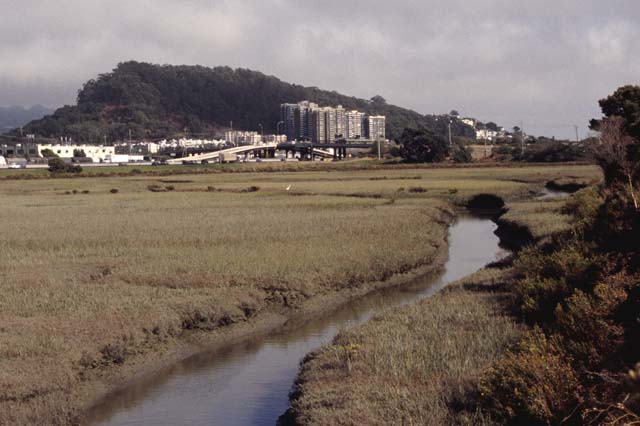
1984 — Membership reaches 33,538. The Chapter opposes and closely monitors the proposed 18,000-home Las Positas development in Alameda County. The Chapter vehemently opposes plans for a massive basalt quarry near Sunol at Apperson Ridge, home to the golden eagle and prairie falcon.
1985 — The Citizens for an Eastshore State Park is formed (CESP), guided by Dwight Steele, Norman La Force and others. The Chapter's Legal Advisory Committee is established.
1986 — Proposition 65 is passed (Safe Drinking Water and Toxic Enforcement Act).
Gay and Lesbian Sierrans is established, the Club's first gay and lesbian section.
1987 — The Bay Trail is created with Chapter support through the Lockyer Bill S.B. 100, referred to as "The Ring around the Bay."
The Delta Regional Group is organized.
1988 — The Chapter invests $30,000 and incalculable staff and volunteer time to gather signatures for and pass the California Parks and Wildlife (CalPAW) initiative, Proposition 70, a State Bond measure which passes. East Bay voters pass Measure AA, a local park land acquisition measure. Both bond acts will help fund Eastshore State Park and other park land acquisitions.
The Chapter begins a major campaign to fight a plan for the East Bay Municipal Utility District to build a $190 million dam and reservoir in Buckhorn Canyon near earthquake faults. The dam is never built.
1990 — The West Contra Costa Regional Group is formed.
The Alameda County Source Reduction and Recycling Board is created to reduce landfilled solid waste by 75% over time and establish commercial and residential recycling.
Pleasanton Ridge is established as a regional park of over 2,000 acres after a long battle by Chapter leader Bob Walker and others to save it. Walker also leads campaign to double the size of Morgan Territory, which now contains a ridge named in his honor.
19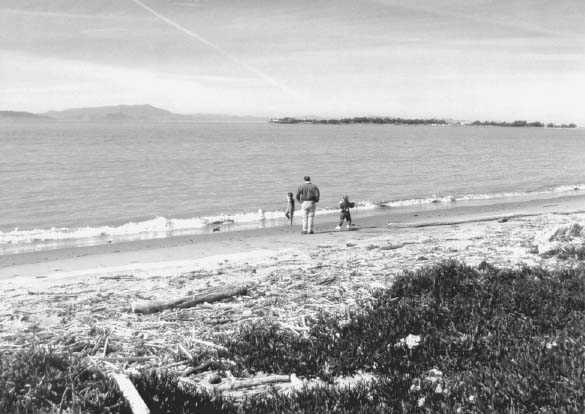 91 — The Eastshore State Park is created.
91 — The Eastshore State Park is created.
San Francisco Dinners celebrates 30 years of service (it had recessed from 1952-1961).
1992 — The Northern Alameda County and the Southern Alameda County Groups of the Chapter are formed.
AB 754 makes the East Bay Regional Park District a state agent for acquisition and development of Eastshore State Park, to run from the Bay Bridge to the Richmond Marina.
The 11,000-home Dougherty Valley development is approved in Contra Costa County in the face of fierce opposition by the Chapter and other conservation groups.
1993 — Mt. Wanda (326 acres) is added to the John Muir National Historic Site in Martinez. Muir and his family often strolled there.
1994 — As mandated by the Burton Bill of 1972, the U.S. Army transfers jurisdiction of the Presidio to the National Park Service as part of the Golden Gate National Recreation Area.
Vicky Hoover leads the Chapter's efforts along with the Calif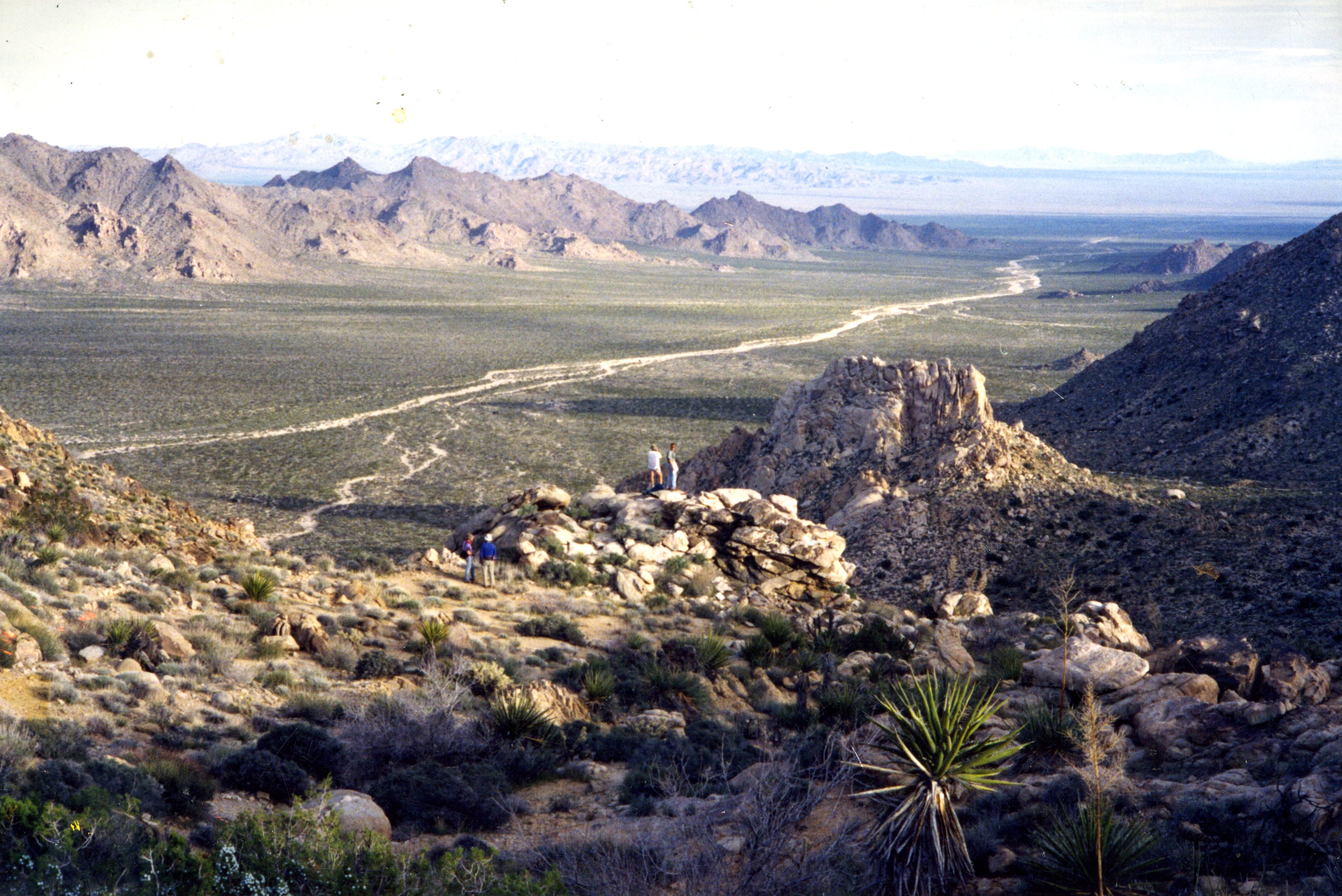 ornia Wilderness Coalition and others to pass the California Desert Protection Act. This monumental conservation achievement will preserve over 7 million desert acres.
ornia Wilderness Coalition and others to pass the California Desert Protection Act. This monumental conservation achievement will preserve over 7 million desert acres.
Chapter membership reaches 35,593.
1996 — Contra Costa County's Good Neighbor Ordinance passes (giving the county oversight of maintenance projects at Tosco, Shell, and other refineries).
The Pleasanton Urban Growth Boundary Measure is passed to protect open space from development for the next 20 years.
1997 — With leadership from Rep. Nancy Pelosi, and planning efforts by Michael Alexander and the Chapter's Presidio Task Force, the Presidio Trust is established, an executive federal corporation with responsibilities to oversee the Presidio.
Cynthia Patton, Margaret Tracy, and others form a new Tri-Valley Regional Group of the Chapter. It had been inactive for some time but is revived with much enthusiasm.
1998 — The Chapter is a major force behind the campaign to defeat Measure B, the Alameda County Transportation Sales Tax. We object because of its heavy funding of highway expansions and very limited funds for public transit.
East Bay Dinners celebrates 50 years of entertaining and educational programs.
Chapter membership reaches 36,282.
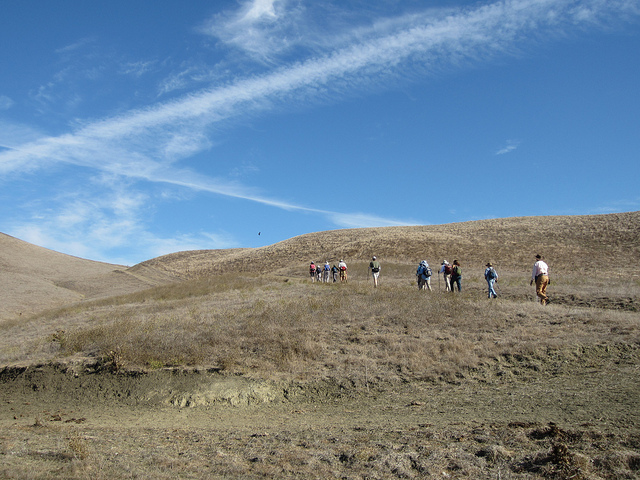 A 5,330-home development plan in pristine Tassajara Valley is withdrawn in the face of mounting anti-sprawl opposition by the Chapter and other environmental groups. The Chapter plays major role in persuading the Contra Costa County Board of Supervisors to begin reversing urban growth policies in favor of tightening county urban limit lines, and to adopt a strengthened Industrial Safety Ordinance.
A 5,330-home development plan in pristine Tassajara Valley is withdrawn in the face of mounting anti-sprawl opposition by the Chapter and other environmental groups. The Chapter plays major role in persuading the Contra Costa County Board of Supervisors to begin reversing urban growth policies in favor of tightening county urban limit lines, and to adopt a strengthened Industrial Safety Ordinance.
Urban sprawl and transportation issues mount and continue to absorb the San Francisco Bay Chapter.
The Chapter Wilderness Committee works with the California Wilderness Coalition to participate in the Wildlands 2000 project, a campaign to identify California wildlands for designation as wilderness.
1999 — The Chapter celebrates its Diamond Jubilee.
San Francisco Airport proposes plan to fill up to two square miles of the Bay for runway expansion; the Bay Chapter begins major campaign to prevent this.
Chapter settles its lawsuit over expansion of Altamont La ndfill; Waste Management agrees to reduce expansion from 80 million to only 40 million tons and to pay $65 million for habitat and open space, recycling education, and other compensations to communities impacted by its operations.
ndfill; Waste Management agrees to reduce expansion from 80 million to only 40 million tons and to pay $65 million for habitat and open space, recycling education, and other compensations to communities impacted by its operations.
2000 — Stopping sprawl: Voters in Alameda County pass Measure D, the Save Agriculture and Open Space Lands Initiative, establishing a county Urban Limit Line. The Bay Chapter started the idea, coordinated the drafting, and spearheaded the campaign to gather signatures and pass the measure. The Chapter plays a big role in persuading the Contra Costa Board of Supervisors to pass a strong Urban Limit Line.
Parks and open space: The Chapter influences the East Bay Regional Park District to adopt a greatly refined park spending plan. The Chapter's San Francisco Group helps pass Measures A and C, providing significant funding for parks and open space in San Francisco.
Transportation: The Chapter plays a key role in the drafting of Measure B, a greatly improved plan for Alameda County's transportation sales tax, approved by county voters.
Chapter-endorsed candidates win nine out of 11 seats on the San Francisco Board of Supervisors to establish a strong environmental majority.
Chapter revises bylaws to include a representative from each of its regional groups on the Chapter Executive Committee.
The year sees a major change in the Chapter's fundraising: instead of contracting out for telephoners, it brings its telephone outreach efforts in-house, so that phoners are Chapter staff and can make focused contributions to conservation efforts as well as raising money.
2001 — Chapter helps elect new slow-growth majorities in Livermore and San Ramon.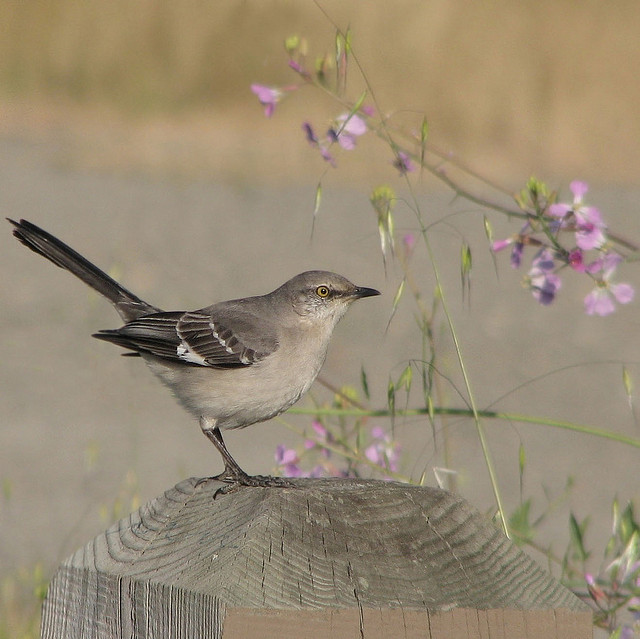
The Marin Group helps a referendum campaign to stop development at Bahia.
The Chapter Activities Committee establishes the Michener Award, named for Dave and Pat Michener, who edited the Chapter Schedule for 30 years, to honor outstanding outing leadership. The Micheners this year step down as editors, and the Chapter makes the transition to new editorial procedures.
Although the Chapter had not been active on energy issues, Chapter leadership decides that it's time to found a new Energy Committee. Energy quickly becomes one of Chapter's top priorities.
2002 — After decades of efforts by the Chapter and the East Bay community, the State Park and Recreation Commission approves a plan for the Eastshore State Park that incorporates much of the Chapter's vision for the park.
Voters in Fremont pass Measure T, a Club-supported hillside-protection ordinance, and in San Ramon voters pass Measure P, which includes an Urban Growth Boundary.
The Livermore City Council adopts Urban Limit Line for North Livermore.
Sen. Barbara Boxer introduces the California Wild Heritage Wilderness Act, incorporating the results of the Wildlands 2000 mapping project, and Congress passes and the president signs a bill incorporating the Big Sur portion of the act.
The Chapter starts a local chapter of the Sierra Student Coalition.
The Yodeler holds the first annual Photo Contest, featuring full-color photos in Yodeler and exhibits at venues in each of the Chapter's four counties.
Yodeler production goes all-electronic.
2003 — The San Francisco Board of Supervisors tells San Francisco Airport to drop runway expansion plan. Chapter leader Jane Seleznow, along with Richard Zimmerman of the Loma Prieta Chapter, has played a leading role in galvanizing the massive campaign to bring this outcome.
The Chapter helps persuade the Water Transit Authority to drop the most objectionable features of its ferry plan.
The Chapter helps persuade San Rafael to drop development plans for St. Vincent/Silveira.
The Chapter's Environmental Justice Committee and West Contra Costa Group co-sponsor large community forum on North Richmond shoreline.
The Chapter establishes Sierrans Outdoors in Accessible Recreation (SOAR) to sponsor and encourage outings accessible to people with disabilities.
2004 — We achieve an unprecedented level of volunteer activity, fueled by the November elections. While the national results weren't pretty, locally we ere over-whelmingly successful in electing or re-electing strong conservation-oriented candidates. On the San Francisco Board of Supervisors, all of the environmentalist incubents running retain their seats and our endorsee was elected to replace Matt Gonzalez. Marin County is a clean sweep — all of our endorsed candidates are elected. We endorse and win two critical East Bay ballot measures: Measure CC will provide funding for the East Bay Regional Park District; and Measure M in Hercules will protect Franklin Canyon. East Bay election successes include Richmond, Fremont, Albany and Berkeley.
Our big open-space successes of the year are in Contra Costa County. We achieve a settlement agreement for permanent protection of 1,354 acres of land in and adjacent to the Gateway Valley in Orinda. These valuable open-space lands, rich with streams and wetlands, complete a 20-mile-long corridor stretching from San Pablo to Castro Valley. In another settlement agreement we win significant improvements and limitations to development in the Tassajara Valley.
To save money, the Yodeler switches to a bimonthly format. The new, thicker format also allows the Yodeler to go into more depth about priority campaigns.
2005 — A major victory, the San Francisco Public Utilities Commission drops a plan to construct a fourth pipeline across the Central Valley.
East Bay Shoreline protection was enhanced when developers withdrew plans to build a casino across the street from Arrowhead Marsh.
In a first of its kind in the nation, the Metropolitan Transportation Commission approves a policy to relate funding of transit projects to the prior introduction of appropriate land-use policies.
The Chapter leads the campaign against four ballot measures brought by developers to get voters to authorize developments outside the Alameda County Urban Limit Line and the Contra Costa Urban Limit Line. The two bigger measures in Livermore and Brentwood are defeated. The upshot is 7,300 units rejected, and only 2,100 approved.
2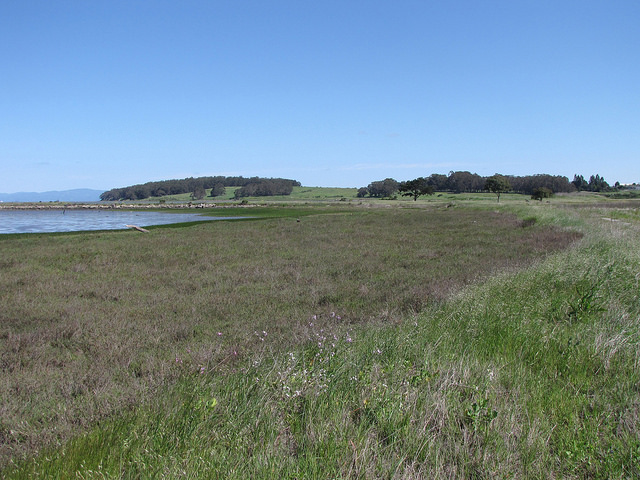 006 — Clean and affordable renewable energy is our highest priority. The Chapter Energy Committee surveys local governments about permit fees they charge for the installation of residential solar systems. The fees in some cities turn out to be high enough to significantly discourage solar-energy use. In response, cities cut fees, and in two cases remove them altogether.
006 — Clean and affordable renewable energy is our highest priority. The Chapter Energy Committee surveys local governments about permit fees they charge for the installation of residential solar systems. The fees in some cities turn out to be high enough to significantly discourage solar-energy use. In response, cities cut fees, and in two cases remove them altogether.
Our biggest victory this year comes when the Board of the East Bay Regional Park District votes to acquire most of Breuner Marsh through eminent domain. We see the success at Breuner as the springboard for a larger campaign to win protection for other open spaces and wetlands in North Richmond.
We celebrate many years of Bay Chapter efforts with the dedication ceremony for the Eastshore Park.
The Chapter Wilderness Committee was one of many organizations that helped to get Congress to pass and President Bush to sign the Northern California Coastal Wild Heritage Wilderness Act, protecting more than 270,000 acres of wild lands in northwestern California.
2007 — One of our highest-profile efforts is addressing energy and global warming. Our aim is not just to do our local share in reducing emissions of greenhouse gases but to make the Bay Area a model for the nation.
2008 — The top 2008 success for the Sierra Club at every level from local to national is the election of Barack Obama as president.
Sustainable energy is one of the Bay Chapter's top priorities, and 2008 sees tremendous advances in San Francisco and Marin County towards sustainable clean energy. Many of our top election victories are largely about energy, in San Francisco in particular, the passage in June of Measure E to reform the city's Public Utility Commission, and the triumph in November of a pro-environmental majority on the Board of Supervisors.
Public lands is one of our perennial priorities, and our other biggest election victory in 2008 is passage of Measure WW in the East Bay Regional Park District, to renew its primary funding source for purchasing lands.
Water is another permanent top concern, and in 2008 the Chapter helped win major improvements in San Francisco's plans for its Hetch Hetchy water system.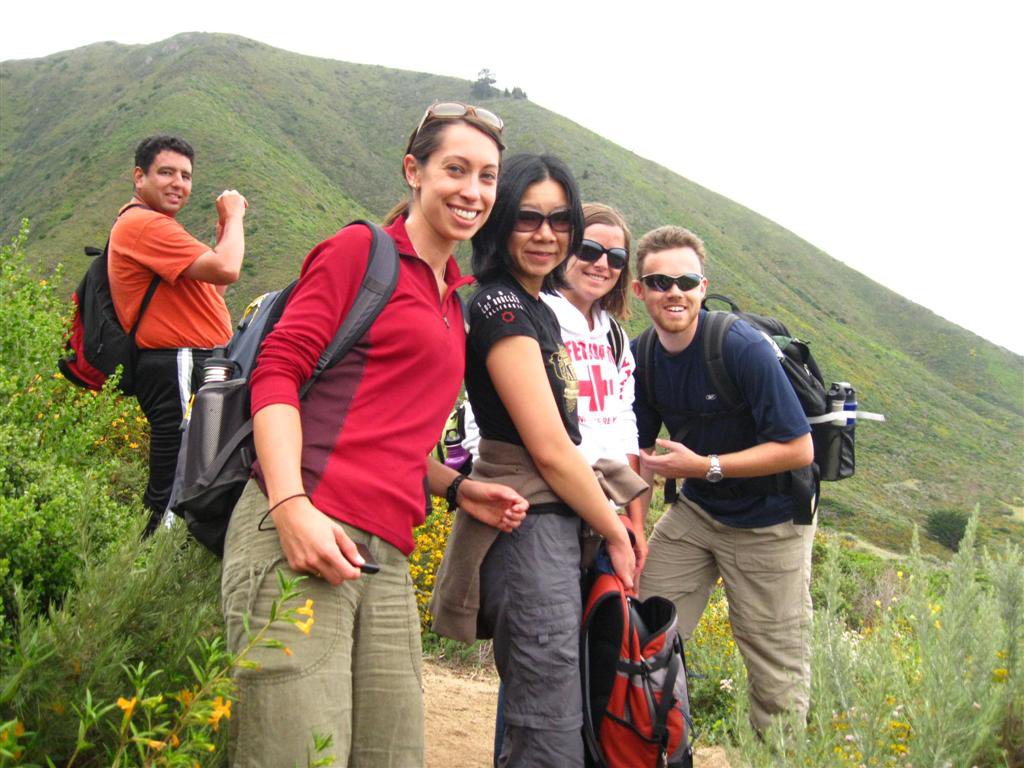
Chapter members and participants under 35 found Bay Area Young Sierrans (BAYS).
The Northern Alameda County Group starts the Green Friday series of potlucks and speakers.
2009 — As the result of years of campaigning, both Marin and San Francisco are close to starting community choice energy programs. San Francisco also breaks ground on the largest municipal solar project in the country.
Chapter plays key role in shaping East Bay Municipal Utility District's Water Supply Management Plan.
The Chapter helps persuade Emeryville not to build a trail through the wildlife habitat of the Emeryville Crescent.
The Northern Alameda Group helps win anti-pollution rules for trucks at the Port of Oakland.
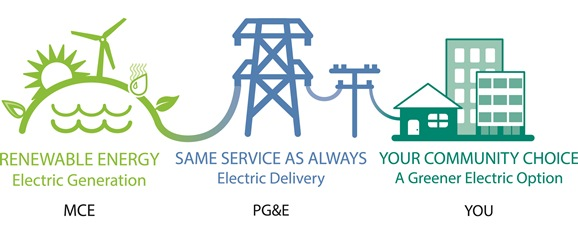 2010 — The Marin Energy Authority begins delivering clean, green community-choice energy to consumers. The electricity comes almost twice as much from renewable sources as PG&E's. The Sierra Club was the leading organization in bringing this about.
2010 — The Marin Energy Authority begins delivering clean, green community-choice energy to consumers. The electricity comes almost twice as much from renewable sources as PG&E's. The Sierra Club was the leading organization in bringing this about.
In Hercules we reap the results of efforts begun by Club volunteers in 1991 to keep development out of Franklin Canyon: this June the Muir Heritage Land Trust completes its purchase of the canyon to protect as open space.
The Concord City Council approves a plan for the former Concord Naval Weapons Station that will make 65% of the land open space and will cluster development near the BART station.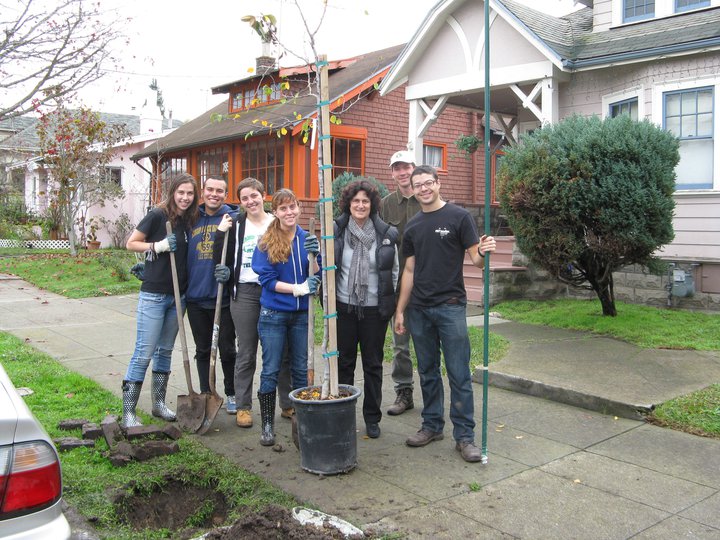
In the November 2010 elections seven current or former Chapter leaders ran for public office (four as incumbents).
The Northern Alameda County Group starts a volunteer street-tree-planting program in Oakland. By then end of 2011 the Group will have planted 381 trees.
2011 — Largely through our efforts, this fall all remaining cities in Marin County join the Marin Energy Authority, which now distributes the cleanest energy on the market to consumers all over the county.
Largely through our efforts, this fall all remaining cities in Marin County join the Marin Energy Authority, which now distributes the cleanest energy on the market to consumers all over the county.
The recreational-vehicle campground of Lawsons Landing at Tomales Dunes has operated for decades without a permit or appropriate regulation. We are part of a large group of environmental organizations that this year finally gets the Coastal Commission to issue a permit and begin the process of fixing some of the serious problems facing this unique ecosystem.
The Chapter succeeds in several campaigns to move local communities towards the goal of Zero Waste: Marin County passes a ban on single-use plastic bags at grocery-store checkouts, and places a five-cent tax on paper bags; San Francisco bans delivery of unwanted yellow-pages phone books; San Leandro prohibits use of polystyrene-foam prepared-food containers.
The Sierra Club begins its Solar Homes campaign. The Bay Chapter plays an active role in getting local residents to install solar panels on roofs.
2012 — Interior Secretary Ken Salazar announces termination of the lease for Drakes Bay Oyster Company to raise oysters in Drakes Estero, which Congress had designated to become a wilderness area.
The city of Alameda passes a new zoning ordinance allowing multi-family residences.
The state Parks Department withdraws a proposal to close many state parks.
San Francisco's Muni begins a program of free rides for youths.
The East Bay Municipal Utility District removes the option of raising Pardee Dam from its water-supply planning.
2013 — The San Francisco Group plays a major role preventing the weakening of San Francisco's environmental protections under the California Environmental Quality Act.
The San Francisco Group helped defeat ballot measures that would have allowed a developer to ignore height limits at the waterfront at 8 Washington.
2014 — The Warriors withdraw their proposal for an entertainment mall and arena on Piers 30 - 32.
The Northern Alameda County Group's tree team plants its 1,000th tree in Oakland.
The Sierra Club helps form the No Coal in Oakland campaign. The diverse coalition — including environmental justice groups, environmental non-profits, labor unions, faith leaders, and individual community activists — comes together to oppose a plan to export coal through a bulk export facility planned for a portion of the former Oakland Army Base. The campaign is committed to developing the site in a way that will create safe jobs for local residents and not jeopardize the health of workers or the community.
2015 — The Bay Area Air Quality Management District passes new regulations designed to reduce wintertime air pollution from residential wood burning.
The Oakland City Council holds a hearing to assess the public health and safety risks associated with coal and petcoke exports through the bulk export terminal planned for the former Oakland Army Base. Students, members of the faith community, business leaders, doctors, public health officials, concerned residents, and many others testify to demand action. Separately, a poll finds that 76 percent of Oakland voters oppose the proposal to export coal through Oakland.
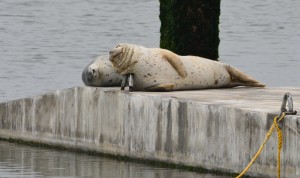 2016 — A new cement float for harbor seals is set up at Alameda Point — the culmination of a two-and-a-half-year campaign to maintain a resting site for harbor seals at the site. The seals’ former resting place is slated to be demolished to make way for a ferry maintenance facility.
2016 — A new cement float for harbor seals is set up at Alameda Point — the culmination of a two-and-a-half-year campaign to maintain a resting site for harbor seals at the site. The seals’ former resting place is slated to be demolished to make way for a ferry maintenance facility.
The Alameda County Board of Supervisors passes an ordinance to ban fracking and other extreme oil-recovery methods in Alameda County.
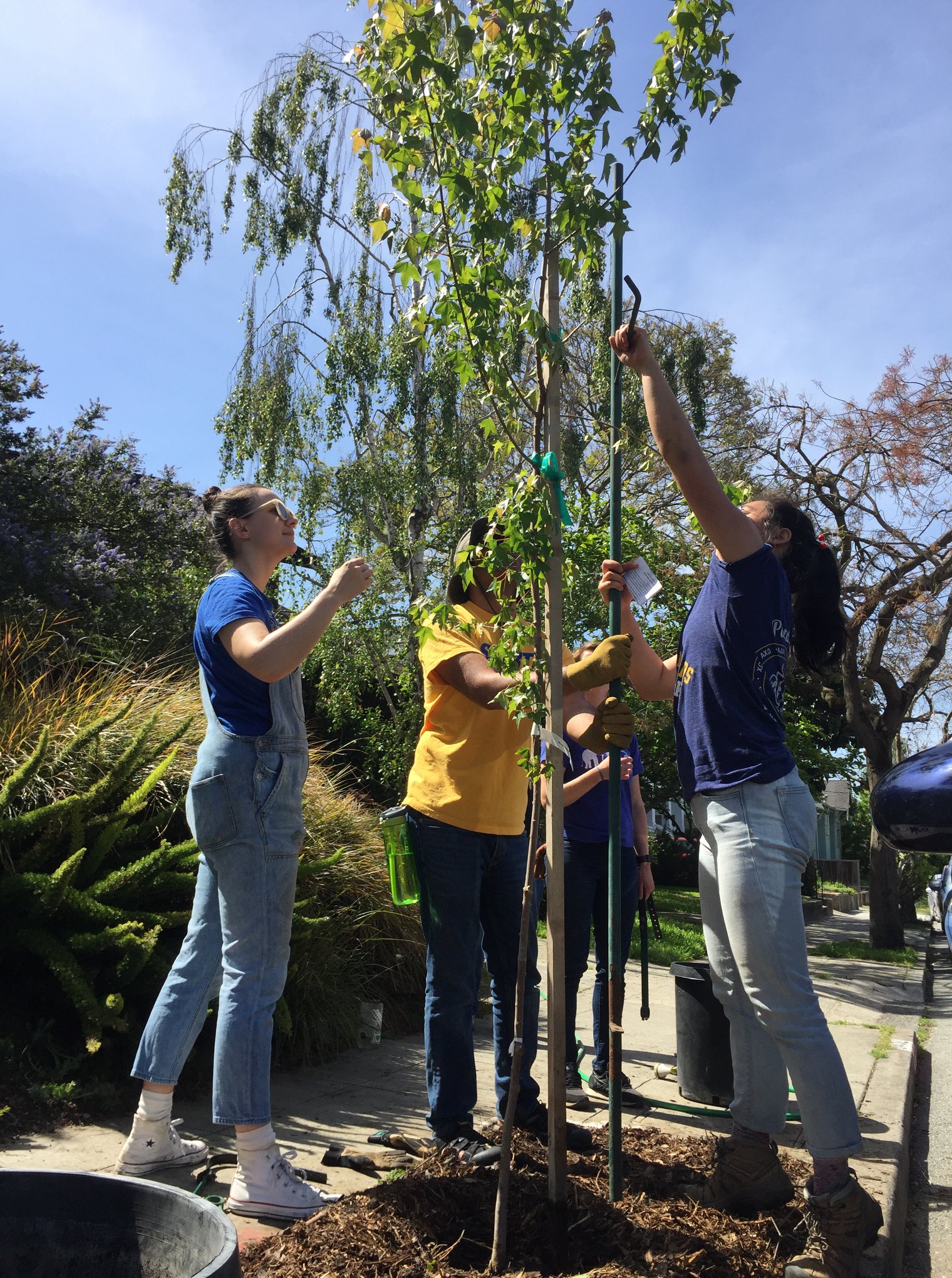 Volunteers with the Sierra Club Tree Team planted 453 trees in the Winter 2015 - Spring 2016 season — a new record in the Tree Team's seven-season history. We planted 125 trees in April alone, the team's busiest month ever. This year’s record planting season brings our total number of trees planted since January 2010 to over 1,900.
Volunteers with the Sierra Club Tree Team planted 453 trees in the Winter 2015 - Spring 2016 season — a new record in the Tree Team's seven-season history. We planted 125 trees in April alone, the team's busiest month ever. This year’s record planting season brings our total number of trees planted since January 2010 to over 1,900.
The Chabot Gun Club located in Anthony Chabot Regional Park closes permanently, bringing an end to five decades of lead and noise pollution.
The Benicia City Council votes unanimously to reject Valero’s hazardous crude-by-rail-terminal project.
Alameda County Board of Supervisors votes to establish a Community Choice energy program for the county.
The City of San Francisco passes legislation that prohibits the leasing of city-owned land for fossil fuel extraction. It plans to transition 800 acres of city-owned land in Kern County — which was leased to Chevron for oil drilling for decades — to solar fields.
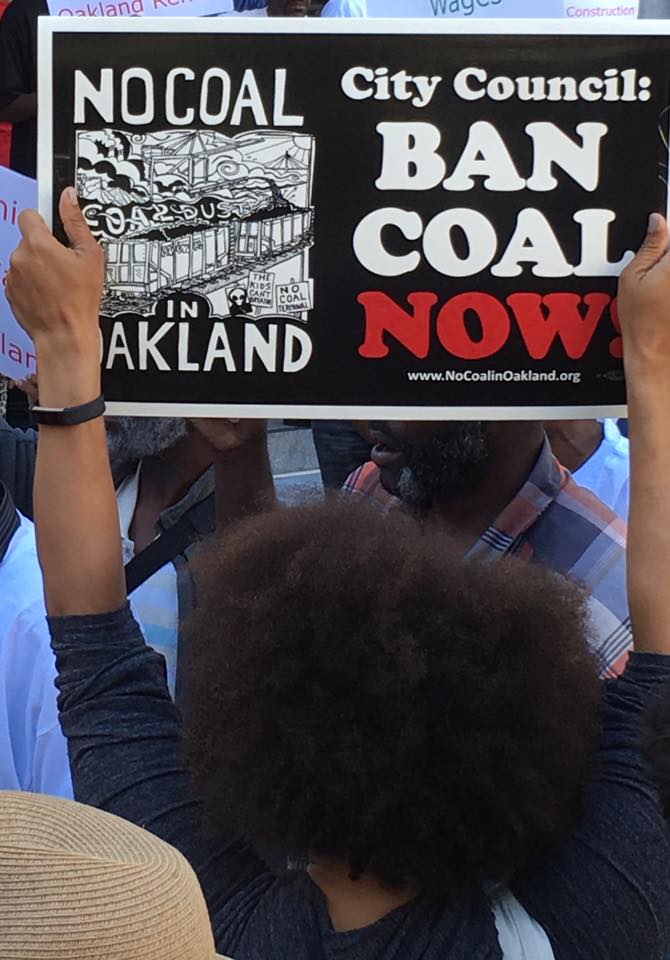 The Oakland City Council votes unanimously to ban coal and petroleum coke (petcoke) storage and handling in the city, citing health and safety concerns like coal dust and climate change. Oakland Bulk & Oversized Terminal, LLC, owned by private developer Phil Tagami, sues the City of Oakland to overturn the ordinance.
The Oakland City Council votes unanimously to ban coal and petroleum coke (petcoke) storage and handling in the city, citing health and safety concerns like coal dust and climate change. Oakland Bulk & Oversized Terminal, LLC, owned by private developer Phil Tagami, sues the City of Oakland to overturn the ordinance.
2017 — Oakland adopts electric vehicle infrastructure requirements that exceed even the State’s green building standards.
The chapter helps broker a compromise with the City of San Francisco that will protect endangered species at Pacifica’s Sharp Park Golf Course.
The Sierra Club and SF Baykeeper, represented by Earthjustice, have file a motion to intervene in a lawsuit challenging Oakland’s ban on handling and storage of coal in Oakland. The groups also filed a motion to dismiss the lawsuit.
The 1,200-acre Vargas Plateau Regional Park in Fremont reopens to the public after nearly a year of legal lockup.
Marin becomes the first county in California, and possibly the nation, to be using 100% renewable energy (via MCE’s Deep Green power program) for all municipal accounts.
2018 — The Sierra Club signs on to the City of Oakland appeal challenging a ruling on a lawsuit that overturned the city's ban on coal handling and storage.
The Community Choice clean energy program East Bay Community Energy launches as the new default electricity provider for Alameda County. Activists including the Sierra Club helped shape EBCE’s Local Business Development Plan — an unprecedented opportunity for securing community benefits like green jobs through new renewable energy development. The chapter was also part of a successful effort to ensure EBCE launched with a 100% renewable energy option for customers.
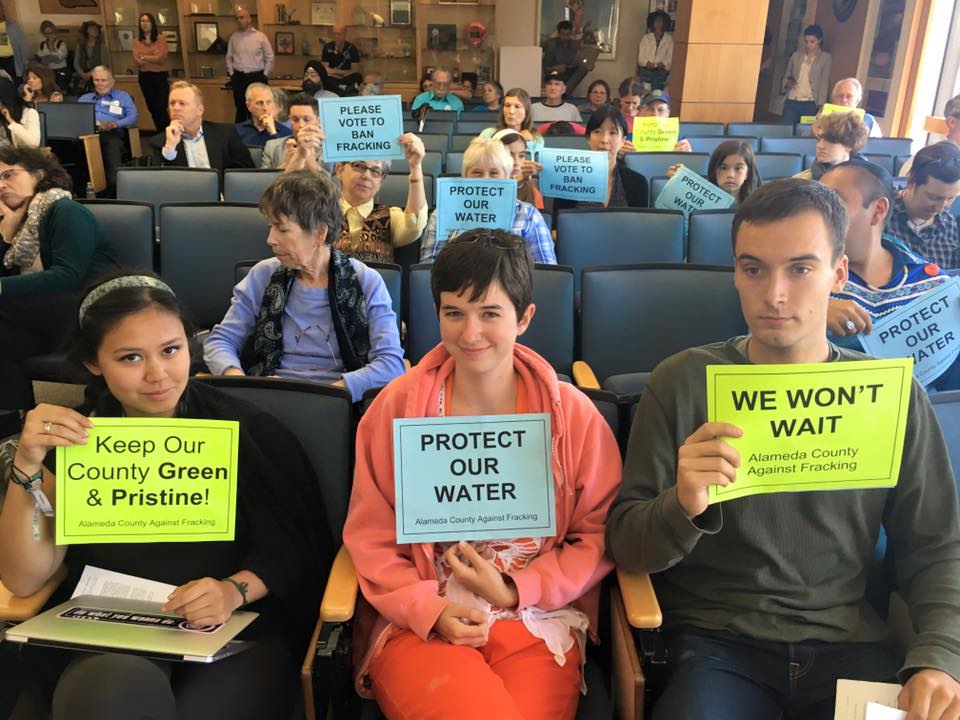 With the support of the Tri-Valley Group and Water Committee, the Alameda County Board of Supervisors rejected permits for accident-prone driller E&B Natural Resources to expand and extend its operations in the Livermore Valley. The action effectively ends fossil fuel extraction in the county.
With the support of the Tri-Valley Group and Water Committee, the Alameda County Board of Supervisors rejected permits for accident-prone driller E&B Natural Resources to expand and extend its operations in the Livermore Valley. The action effectively ends fossil fuel extraction in the county.
30,000 people join the March for Climate, Jobs & Justice in San Francisco
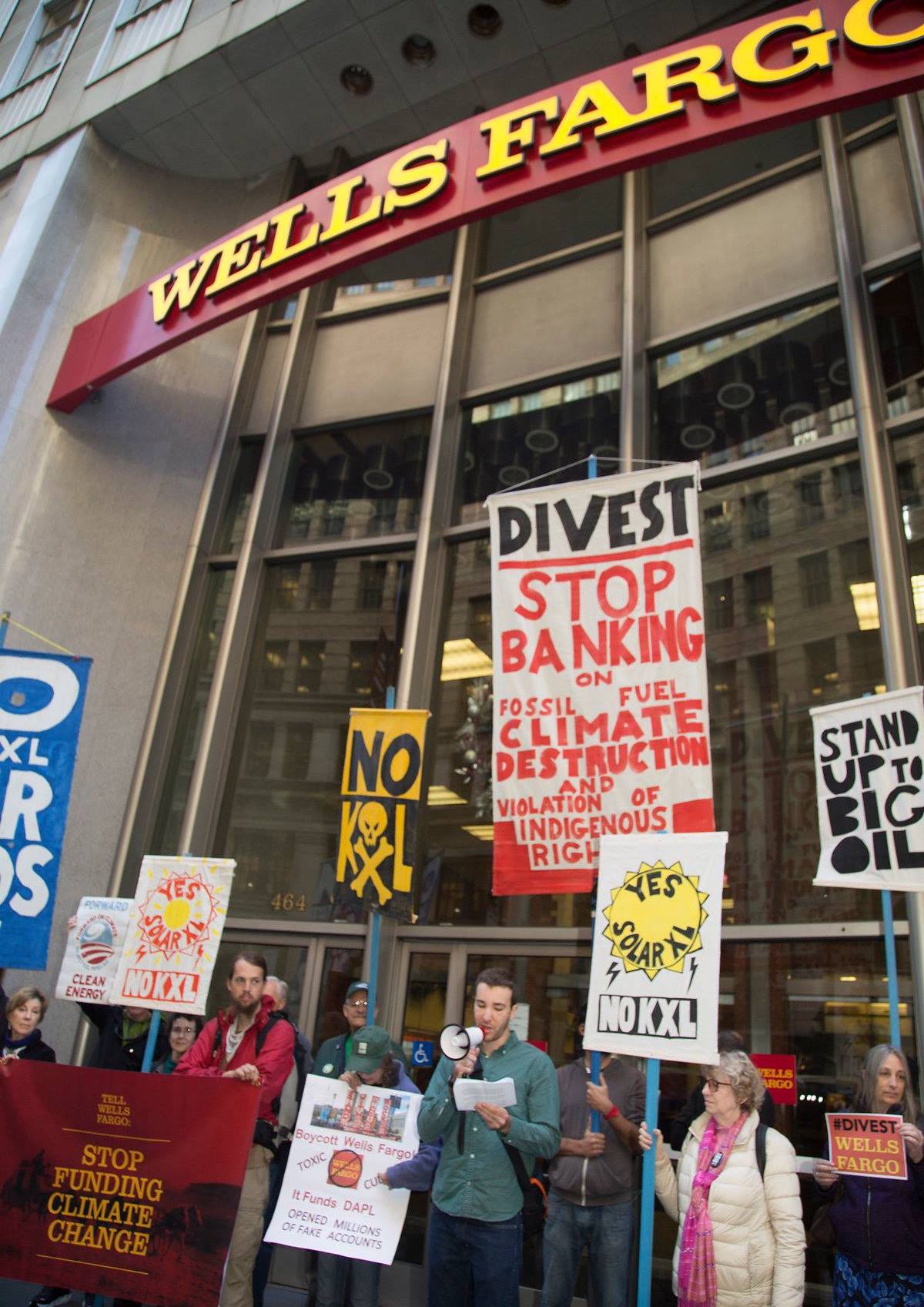 The State Water Board adopts Phase I of the Bay-Delta Plan, which will allow more water to flow into the lower San Joaquin River and its tributaries and roll back an ongoing ecological crisis in the San Francisco Bay Delta.
The State Water Board adopts Phase I of the Bay-Delta Plan, which will allow more water to flow into the lower San Joaquin River and its tributaries and roll back an ongoing ecological crisis in the San Francisco Bay Delta.
A number of cities implement regulations to reduce plastic waste like straws and other foodware.
The chapter moves all its funds out of Wells Fargo accounts as part of a growing movement to cut ties with financial institutions that fund fossil fuel projects.